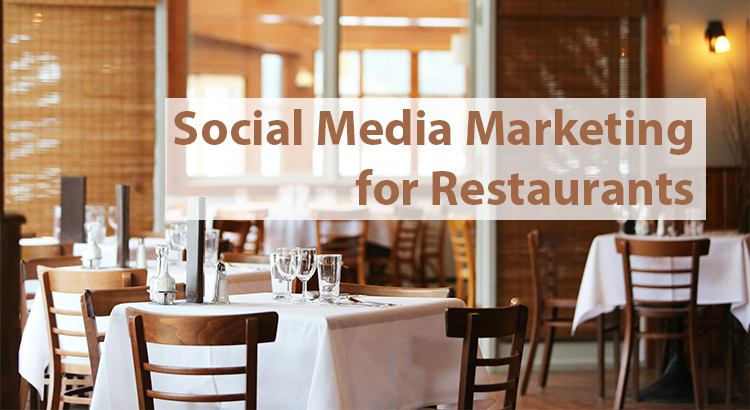This comprehensive guide explores discover effective strategies and tactics to harness the power of social media marketing for restaurants. It also has benefits and cost associated with social media marketing for your restaurant.
Benefits of Social Media Marketing for Restaurants
- Enhanced Visibility and Brand Awareness: Social media boosts restaurant visibility globally, creating a distinct brand identity through engaging content, attracting a larger audience.
- Direct Interaction with Customers: Real-time communication on social media strengthens relationships, addressing queries, and showcasing transparency, demonstrating a commitment to customer satisfaction.
- Cost-Effective Marketing and Advertising: Social media offers budget-friendly advertising options, targeting specific demographics efficiently on platforms like Facebook, Instagram, and Twitter.
- Community Building and Customer Loyalty: Social platforms foster loyalty by engaging customers with regular updates, behind-the-scenes content, and exclusive promotions, creating a strong online community.
- Market Research and Customer Insights: Social media analytics provide valuable data, aiding restaurants in understanding customer behavior, refining strategies, and tailoring offerings to meet expectations.
Social Media Marketing Strategy for Restaurants
1. Create Proper Social Media Profiles for Your Restaurant
Establish a cohesive brand identity across platforms with accurate information, captivating visuals, and engaging bios to make a lasting first impression on visitors.
2. Use Social Media Monitoring
Stay informed about online conversations related to your restaurant, monitor reviews, and promptly respond to feedback to demonstrate attentiveness and commitment to customer satisfaction.
3. Take and Post Beautiful Photos
Capture visually appealing images of your dishes, drinks, and ambiance, creating an enticing online presence that attracts customers and showcases the unique aspects of your restaurant.
4. Participate, Engage, and Share
Actively engage in discussions, participate in relevant conversations, and share compelling content to enhance your restaurant’s online presence and foster a sense of community among your audience.
5. Find Your Customers
Utilize analytics tools to identify and target your specific audience, tailoring your content and engagement strategies to reach potential customers who are most likely to be interested in your restaurant.
6. Host Social Media Contests
Encourage user participation, excitement, and brand loyalty by organizing contests on social media platforms, offering incentives and creating opportunities for customers to actively engage with your restaurant.
7. Use Emojis
Inject personality into your posts by incorporating emojis, adding a touch of informality and emotion that resonates with your audience, making your content more relatable and engaging.
8. Monitor Your Reputation
Vigilantly track online reviews, comments, and mentions to proactively manage your restaurant’s online reputation. Address negative feedback diplomatically and showcase positive interactions to build trust.
9. Do Facebook Ads
Leverage the targeted advertising capabilities of Facebook Ads to reach specific demographics. Invest in visually appealing and strategically targeted ads to maximize their impact and expand your restaurant’s reach.
10. Show the Behind-the-Scenes
Provide glimpses into your kitchen, introduce staff members, and share the process behind creating your dishes. Humanize your brand, giving customers a deeper connection and insight into your restaurant.
11. Gather Customer Feedback
Actively seek and respond to customer feedback through surveys, polls, and comments. Use this valuable information to understand preferences, address concerns, and continuously improve your restaurant’s offerings.
12. Use Instagram Hashtags
Increase the visibility of your posts by incorporating relevant hashtags on Instagram. Create a unique branded hashtag and encourage customers to use it, fostering a sense of community around your restaurant.
13. Do Influencer Marketing
Partner with influencers in the food and lifestyle niche to extend your restaurant’s reach. Their endorsement can introduce your establishment to new audiences and build credibility within your target market.
14. Share Customer-Generated Content
Encourage customers to share their experiences and content related to your restaurant. Reposting user-generated content not only diversifies your content but also showcases satisfied patrons, enhancing your restaurant’s authenticity.
Useful Article: User-Generated Content for Marketing: A Comprehensive Guide
15. Use Promoted Tweets
If your restaurant has a Twitter presence, consider using promoted tweets to boost visibility and engagement. This advertising option allows you to reach a wider audience and increase the impact of your Twitter marketing efforts.
Useful Article: Social Media Marketing Tips for Small Business Growth
Cost of Social Media Marketing for Restaurants
The cost of social media marketing for restaurants varies based on factors such as platform choice, advertising budget, and content creation expenses. While organic reach is cost-free, investing in paid advertising can significantly amplify your online presence.
Related Article: How Much Does Social Media Marketing Cost?
Conclusion of Social Media Marketing for Restaurants
Learning social media marketing is beneficial for restaurants aiming to thrive in today’s competitive landscape. By embracing these strategies, restaurants can not only enhance their online visibility but also build lasting connections with their customers.


